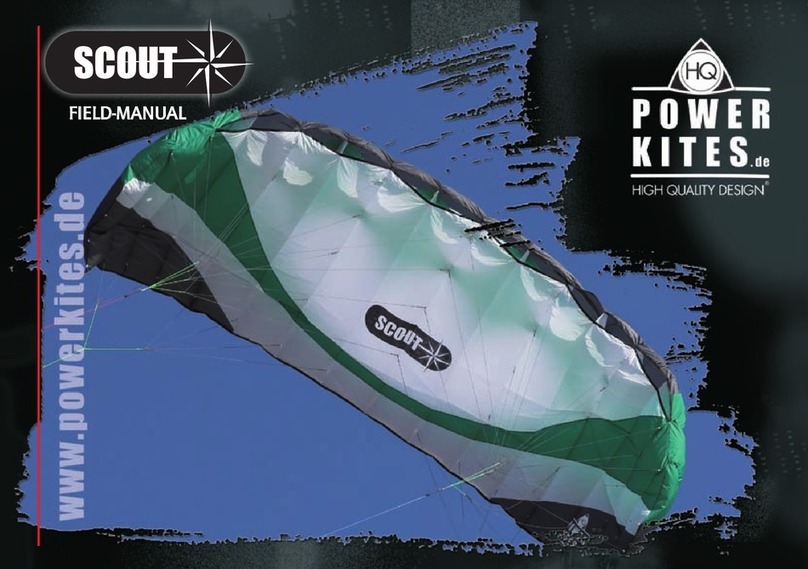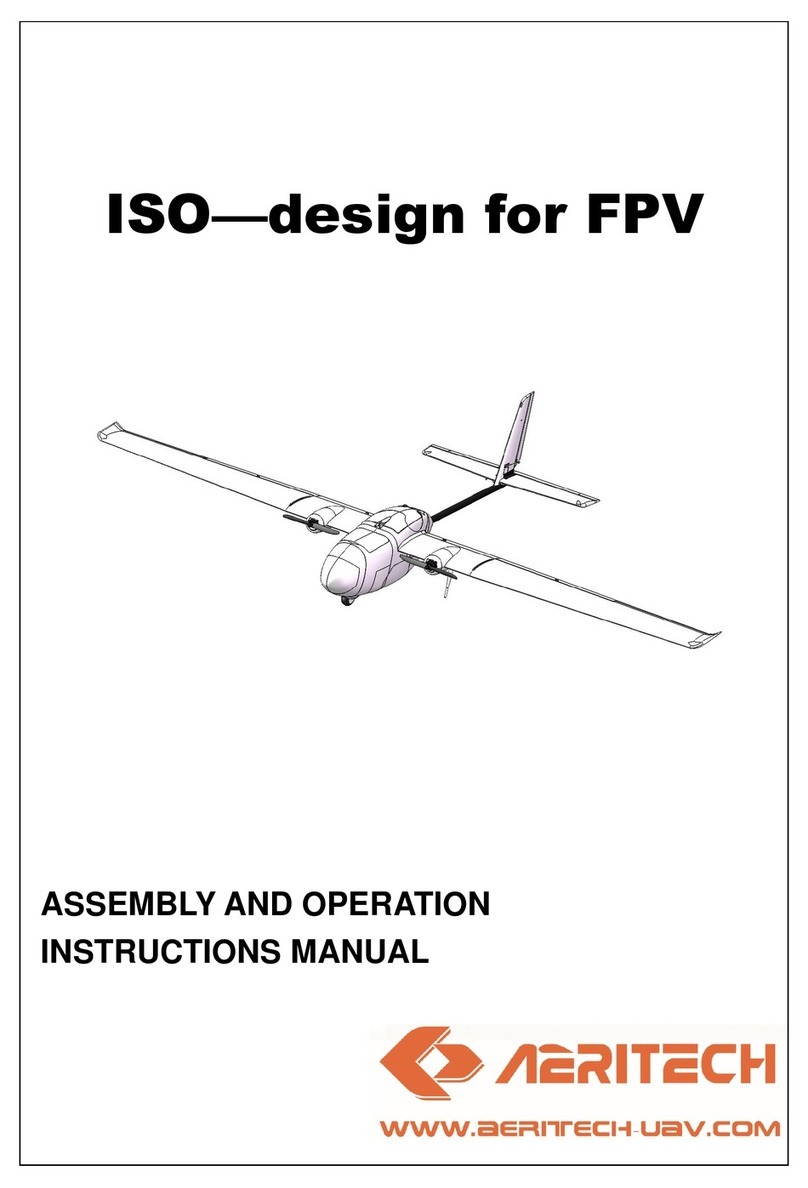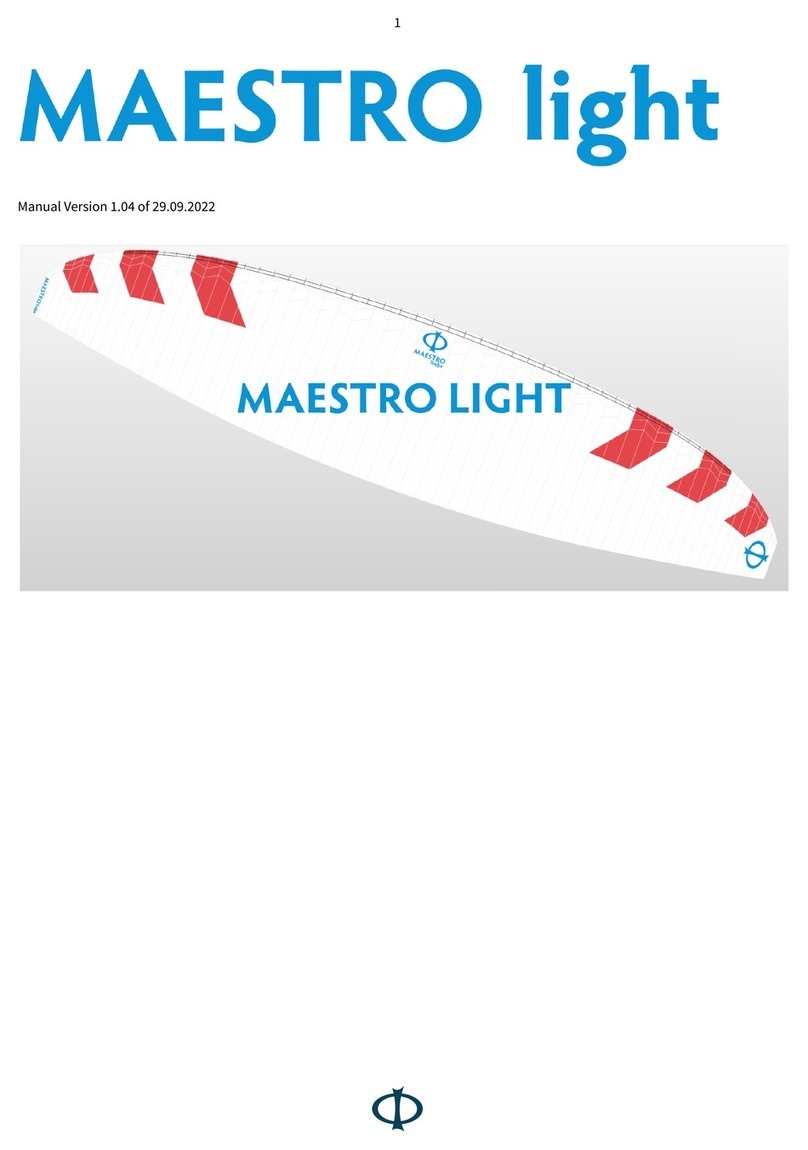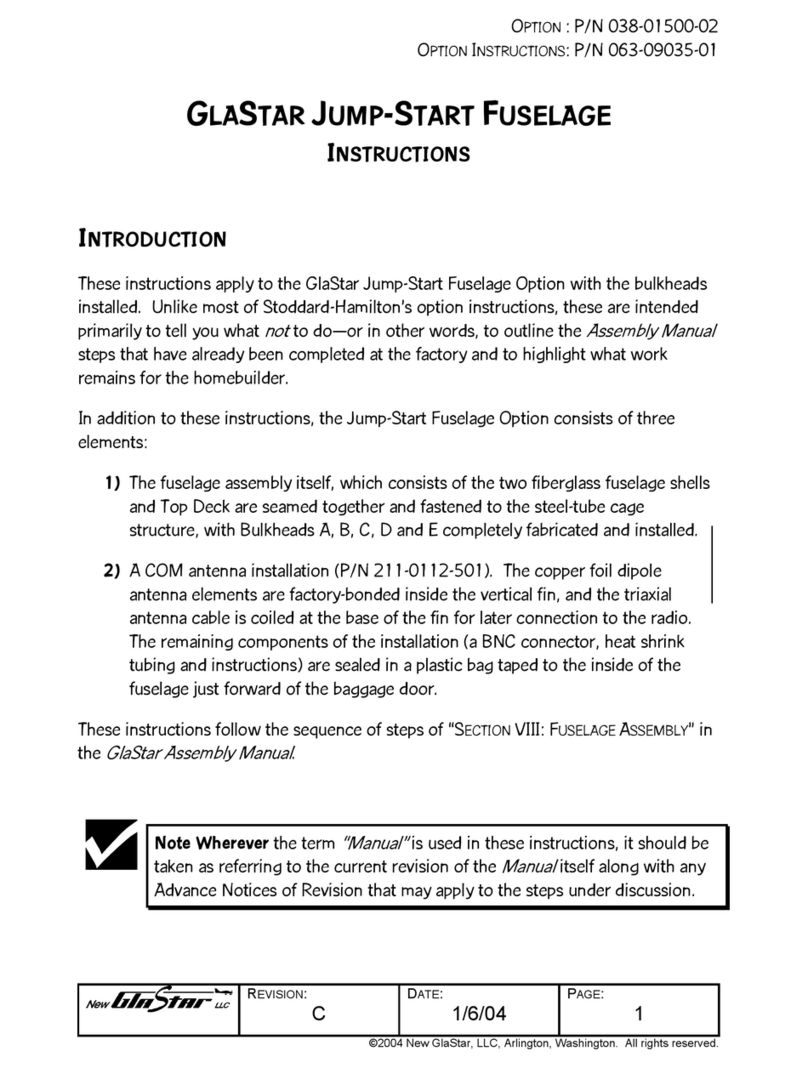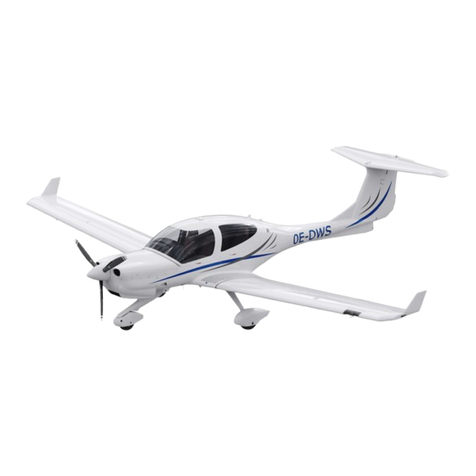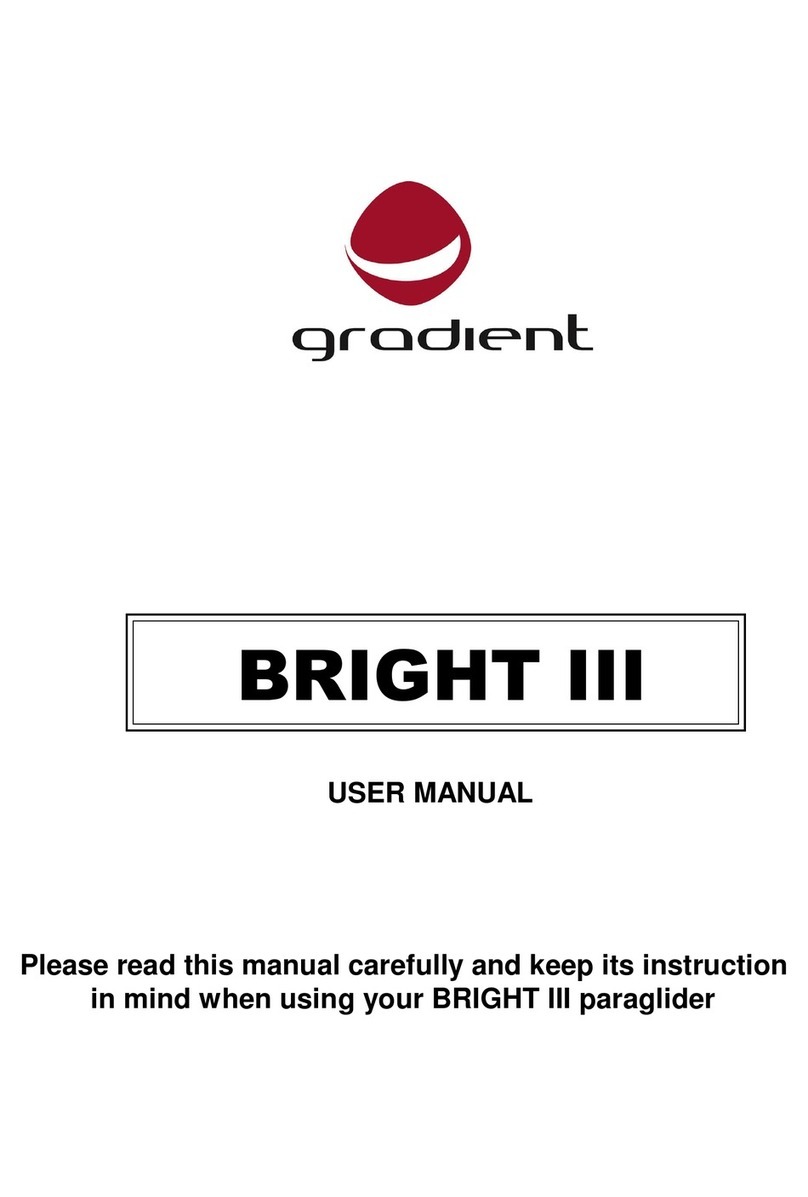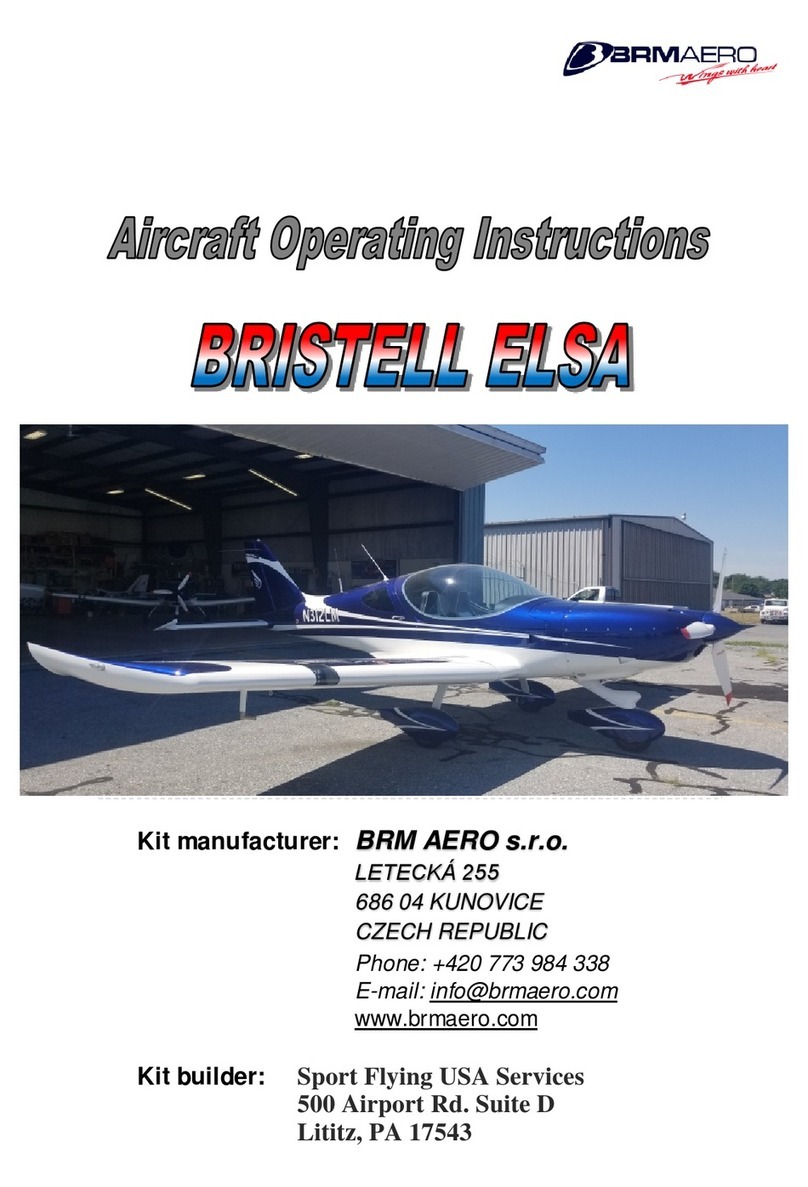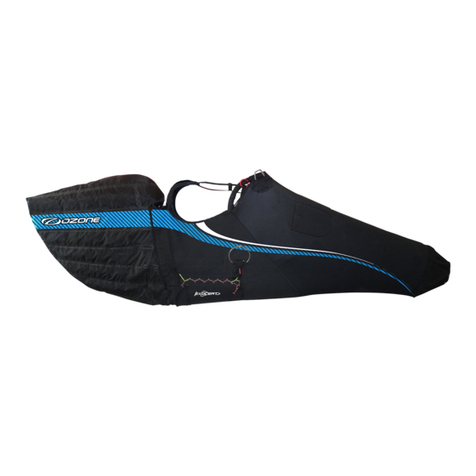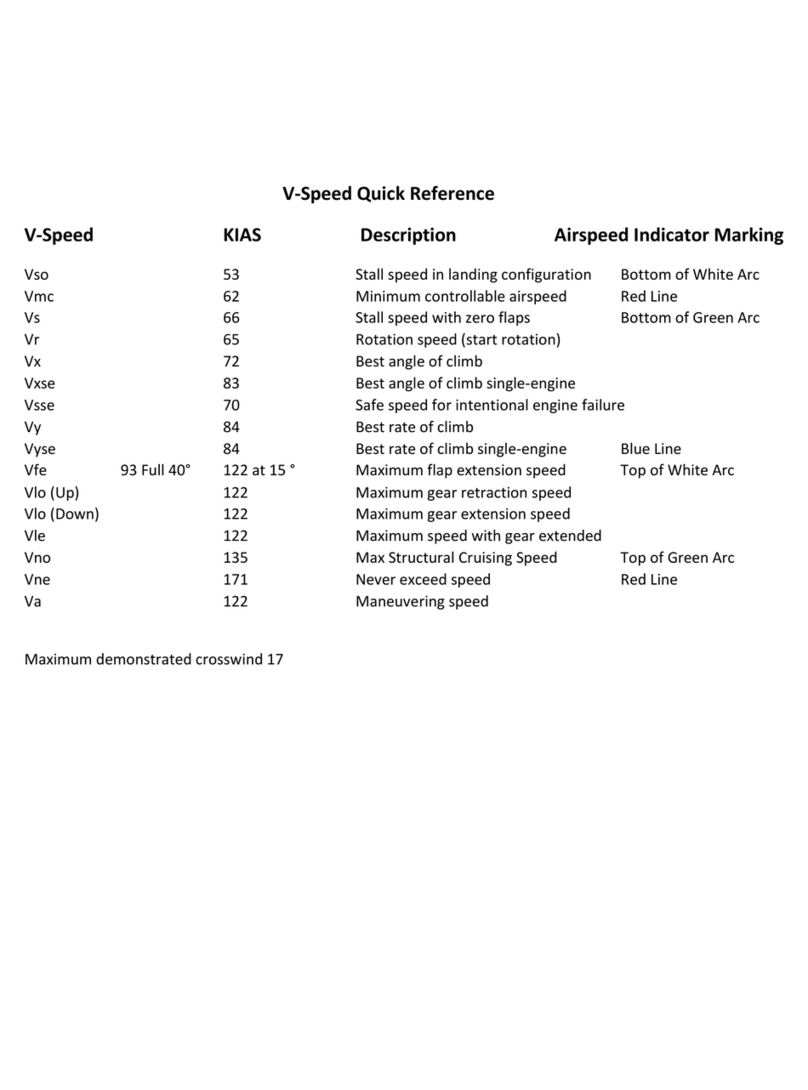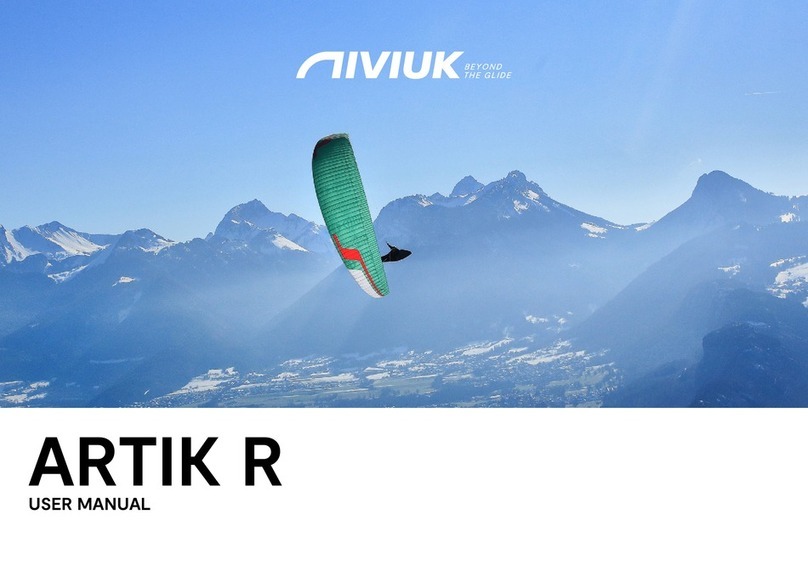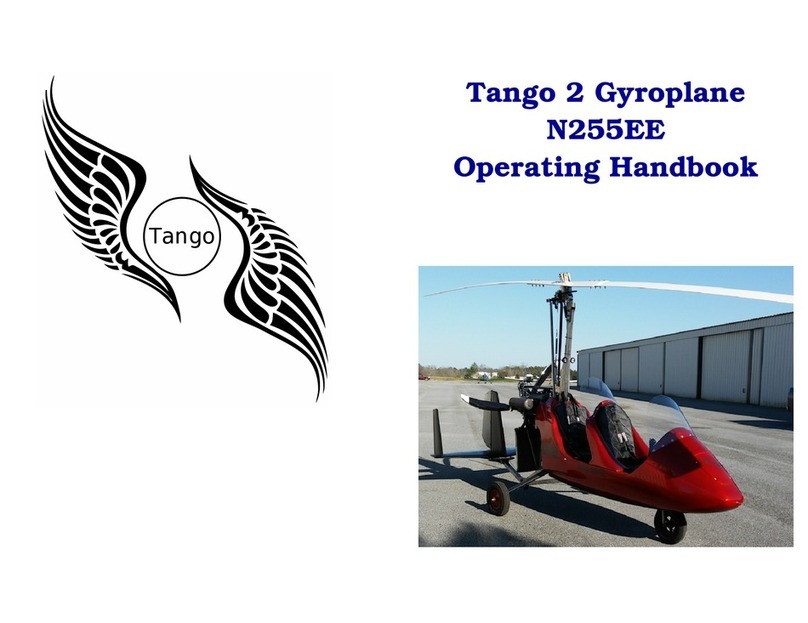Aeronca - 11AC Chief User manual

Pilot's Operating Handbook
Aeronca - 11AC Chief
This manual has been prepared to inform the pilot of systems and features
incorporated in the Aeronca Model 11AC aircraft. The enclosed operating
procedures and performance data are provided so that maximum utilization can
be obtained with the utmost safety, economy and serviceability.
This manual does NOT replace the FAA approved placards and operating limits
in a specific aircraft. If a difference exists between this manual and the FAA
approved placards / operating limitations, the FAA approved placards and
operating limitations shall be the authority.
Engine:
Continental A-65-8
Type Certification No. E-205
Cylinder Bore 3.875
Stroke 3.625
Displacement 171 ci
Rated HP (sea level) 65 hp
Maximum RPM 2300
Recommended Cruise RPM 2150
Minimum Octane 73
Oil pressure - cruise 30/40
- Minimum 10
Oil Capacity 4.5 qt
Max Oil Temp
(at 100 F outside temp) 220
This manual is provided to the Aeronca "Chief" Owner for Flight and Operating
procedures. It includes a copy of the aircraft Type Certificate as well as
specifications and performance data.

The Aeronca Chief is designed and assembled so that proper care and
maintenance will assure long life to the aircraft.
ATTENTION
When taxiing downwind with the Model 11AC, it is advisable in strong and gusty
winds to taxi slowly with the stick well forward. Use particular care when turning
from a downwind to a cross wind position. When a quartering tail wind is
experienced, keep the aileron nearest the direction from which the wind is
blowing in a DOWN position. With a quartering tail wind, always keep the stick
directly away from the wind direction.
Always face directly into the wind when "running up" the engine. Facing the wind
tends to eliminate torque-quartering effects and aids engine cooling at high RPM.
GENERAL DESCRIPTION
The "Chief" is a two place, side by side, high wing monoplane. Basic fuselage
construction is welded tubing with fabric covering. The wings are composed of
two wooden spars with aluminum ribs and fabric covering. The wing leading
edges are covered with aluminum sheet to provide a more efficient airfoil. Power
is provided by a 65 hp engine and fixed pitch propeller. Engine vibrations are
dampened by rubber mount bushings.
Good vision is attained through the use of a one piece windshield plus large
door and rear quarter windows. Basically the Chief is a conventional three control
aircraft. The wheel type dual control system provides smooth and non-fatiguing
control. Heal brake pedals are provided on the pilot's side, and rudder pedals
without brakes on the copilot's side. A trim tab on the left elevator compensates
for load differences and provides for hands-off flight. The trim tab control is
located above and between the two occupants. Engine controls are readily
accessible from either seat. Concealment of cabin control cables provide greater
cabin comfort. A large baggage compartment is located behind the seat to
accommodate luggage and other items.
The famous Aeronca Oleo Landing gear is incorporated in the Chief. This time-
tested method of landing gear construction ensures sturdy yet smooth handling
on rough fields. Much of the shock is absorbed in the oleo, thereby lessening
fatigue in the rest of the airframe and wing structure. Ease in ground handling is
assured with steer-able leaf spring tail wheel and positive-acting mechanical
brakes. Tie-down rings are incorporated at the strut wing attachment point for
security in the event storage space is not available.

CABIN
Plexiglas windows are used throughout, assuring a minimum of discoloration due
to exposure. When cleaning, all grit and foreign particles should be flushed off
with clean water. Final cleaning should be done with a soft cloth and any
recommended type of Plexiglas cleaner. Never use dirty, oily rags to clean
Plexiglas. Rapid changes in temperature should be avoided, such as moving
from a warm hangar to extreme cold, which will cause rapid contraction and
breakage. Allowing fifteen minutes after Plexiglas has cooled is recommended
before starting engine. Vibration increases possibility of breakage during cooling.
The instrument panel is hydro-formed all metal with a rich grained finish
harmonizing with the interior color scheme of the cabin. Instruments and controls
are functionally grouped. The primary group center panel is sloped to provide
better visibility of instruments. Decorative center trim may be removed to provide
room for additional instruments without defacing the panel. Two ash trays, key
type switch, new type compass, and two glove compartments are standard
equipment in addition to oil temperature, oil pressure, tachometer, altimeter and
airspeed instruments. The carburetor heat control, switch, cabin heater control,
throttle, mixture control, push/pull main fuel shut-off are mounted in a lower sub-
instrument panel located between the control columns and readily accessible to
both occupants.
The auxiliary fuel tank is located behind the luggage compartment and the fuel
valve is on the left side of the cabin directly below the instrument panel.
CAUTION -- Very Important The auxiliary fuel valve should be in the "OFF"
position when the aircraft is on the ground [or at nose-high attitude]. Failure to
close this valve will allow fuel to drain back to the auxiliary tank from the main
tank when in a three point position. Fuel should be transfered from the
auxiliary to the main tank during level or gliding flight only, and when the
main tank is less than one-half full. Always turn auxiliary valve to "OFF"
position before landing.
CAUTION: Checking for water in the sediment bowl should be done daily.
Operating in cold weather and storing in a warm hangar with an unfilled fuel tank
or operating in a climate where high humidity is prevalent are most probably
causes for condensation and the presence of water in the system.
For cold weather starting, three slow movements of the primer pump as the
propeller is turning over will force fuel directly into the induction system assuring
quick, positive starting.
CAUTION: Be sure fuel vent lines to the tanks are not plugged. There is a vent
for each tank in the wing outboard of the tank.

Airplane Specifications
Airframe
Length 20' 5"
Height 6' 7"
Height Level 8' 8"
Wing Span 36'
Aspect Ratio 7.25
Wing Chord 60"
Stabilizer Span 10' 2"
Wheel Tread 72"
Wheel Base 15' 10"
Stabilizer Incidence -3.5 degrees
Wing Dihedral +2 degrees
Wing Incidence +1 degree
Fin Offset 3/8" Left of Centerline
Cabin Width 36"
Cabin Height (floor to ceiling) 45"
Cabin Height (seat to ceiling) 35"
Weights
(CHECK current weight and balances)
Empty Weight 790
Gross Weight 1250
Useful Load 460
Wing Loading 7.15
Power Loading 19.2
Baggage 70
Performance
Cruising Speed 90 MPH
Maximum Speed 129 MPH
Landing Speed 40 MPH
Rate of Climb 500 fpm
Fuel Capacity 15 Main - 8 Aux

Fuel Consumption 4.4 Gal/Hr @ 2150
Cruise Range 270/420 miles
Oil 4 Quarts (U.S.) Minimum
Oil Consumption .75 Pint per Hr.
Oil Pressure 10 lbs. Idle (Min)
30-40 Cruise (Green)
Oil Temperature 90 Min for Take-Off
220 Max (Red Line)
Propeller Limits
Tachometer Max 2300 RPM
Cruise 2150 RPM
Preflight Inspection
1. Cabin
oCabin Door - CHECK condition, security
oDoor Latch, Open with slight inward pressure on door and move
latch to down position, Close with slight pressure on door and move
latch into locked-horizontal position
oFlight Controls - CHECK freedom of movement
oTrim tab - check for slight nose up position
oMagneto - OFF
oFuel quantity Gauges - CHECK quantity
oMake a note of tach time and fuel quantity to determine endurance
range
oMain Fuel Shut-off Valve - OPEN
oAux Fuel Shut-off Valve – CLOSED
oPrimer Closed and Locked
oSeat Belts - CHECK condition, secure belt and harness if not in use
oEmergency Locator Transmitter - ARMED
2. Right Wing
oWing leading edge and tip free of damage
oAileron - CHECK condition, freedom of movement, security, hinges
secure
oWing Tip - CHECK condition
oInspect the front and rear lift struts for straightness, dents and other
damage.
oCHECK strut drain holes to ensure that they are not plugged and
the struts do not contain water.
oIf either of the above conditions is found, contact an authorized
aircraft mechanic to determine aircraft airworthiness.
oTie-down - REMOVE
3. Right Main Gear
oChocks - REMOVE
oTires - CHECK condition, inflation

oBrakes - CHECK condition, clips install, hub clean, cable tight
oOleo undamaged, no leak, exposed strut similar on both gear
oGear attach bolts secure no looseness
4. Fuselage (Right Side)
oAux Fuel - CHECK quantity, color, cap secure, vents free (cap and
belly vent)
oFabric - CHECK condition
oWindows - CHECK condition, cleanliness
5. Empennage
oHorizontal Stabilizer and Brace Wires - CHECK condition, security
oVertical Stabilizer - CHECK condition
oElevator, and Rudder - CHECK condition, freedom of movement,
security, hinges lubricated and free safe
oElevator Trim tab – check cable and pulley condition
oRudder Trim tab – check for proper bend angle
oTail Wheel - CHECK condition, inflation, security, lubrication, pivot
bolt vertical alignment, main spring bolts and clamp secure, return
springs secure
6. Fuselage (Left Side)
oFabric - CHECK condition
oWindows - CHECK condition, cleanliness
oAux Fuel Drain – Check for leaks and test for water
7. Left Wing
oWing leading edge and tip free of damage
oAileron - CHECK condition, freedom of movement, security, hinges
secure
oWing Tip - CHECK condition
oInspect the front and rear lift struts for straightness, dents and other
damage.
oCHECK strut drain holes to ensure that they are not plugged and
the struts do not contain water.
oIf either of the above conditions is found, contact an authorized
aircraft mechanic to determine aircraft airworthiness.
oTie-down - REMOVE
8. Left Main Gear
oChocks - REMOVE
oTires - CHECK condition, inflation
oBrakes - CHECK condition, clips install, hub clean, cable tight
oOleo undamaged, no leak, exposed strut length similar on both
gear
oGear attach bolts secure no looseness
9. Nose Section
oWindshield - CHECK condition, cleanliness
oOil - CHECK quantity level 3-1/2 Qts. Minimum, dip stick secure
oFuel - DRAIN gascolator, CHECK for leakage
oEngine Compartment - CHECK condition, leakage, etc.

oFuel quantity visual check, cap secure, vent clear
oMuffler pipes secure and tight
oMcDowell Starter cable tight
oCowling and Access Panel - CHECK condition, security
oPropeller and Spinner - CHECK condition, security
oAir Filter - CHECK condition.
ENGINE PRE START
1. Mags Off
2. Fuel Shut-Off Valve - OPEN
3. Prime (2 shots) or Not as required, then lock primer
4. Brakes check
5. Carb heat OFF
6. Throttle Cracked
7. Set Brakes or Tie down tail
8. Pull Prop through eight blades
9. Set prop to just prior to impulse firing
BEFORE STARTING (also see notes and warnings below)
1. Adjust seat
2. Brakes applied
3. Throttle Cracked ¼ or less
4. Carburetor Heat COLD (IN)
5. Visually Clear area, shout clear to warn others
6. Mags switch on both
7. Pull prop through with McDowell Starter
8. Check Oil pressure 20 lbs with 20 sec or shut down with mags off
9. Seat Belts/Shoulder Harness - FASTENED
10.Altimeter set to field elevation
11.Compass indication correct
12.Fuel gauge indication correct.
13.Controls free
14. Brakes - SET
15. Cabin Door – CLOSED Pull door closed slowly and position door handle
to horizontal with door pulled tight shut, check latch secure with some
pressure to try to push door open (windows open as desired)
WARNING
Do not attempt to turn over and/or start the engine by hand unless you have had
proper instruction and experience. If pulling the propeller through by hand is
necessary, be sure the master and magnetos are in the OFF position and the
throttle closed. Have a pilot at the controls and chock/tie down the aircraft. When
pulling the propeller through by hand, treat it as if the ignition switch is turned on.
A loose or broken ground wire on either magneto could cause the engine to fire.

CAUTION
Do not over-prime or excessively pump the throttle (carburetor accelerator pump)
due to the resulting fire hazard.
The use of the fuel primer will vary with each engine and temperature condition.
If the engine is warm, little or no prime is required. During cold weather
conditions, 4 to 6 priming strokes may be required.
During cold weather operation (below 20 degrees F) it is recommended that the
engine be preheated by directing warm air through the opening in the bottom or
front of the engine cowl. This practice will prolong the service life of the engine
and starter.
In very cold weather, it is important to use the proper viscosity engine oil and to
run the engine sufficiently long to bring the engine oil to the normal operating
temperature.
During ground operation, the mixture should be FULL RICH and the
carburetor/alternate air COLD to ensure good engine cooling and filtered air.
Prolonged idle below 1000 RPM is not recommended due to plug fouling and
insufficient cooling air when the aircraft is not in motion.
BEFORE TAXI
1. Controls free
2. Clear area
3. Oil temp increasing
4. Oil pressure 30 psi minimum
5. Seat Adjusted and Belts secure
6. Test Brakes after shot roll under low power
7. Check wind and use proper control positions for safe taxi
RUNUP
1. Head into wind
2. Oil pressure 30 psi minimum
3. Oil temp 100 deg minimum
4. Brakes secure
5. Control stick full aft
6. Throttle 1700 RPM
7. Left mag (100 RPM drop max)
8. Right mag (100 RPM drop max)
9. Mags switch BOTH
10.Carb heat (75 RPM minimum drop)
11.Static RPM 2150 minimum

12.Idle RPM 800 maximum
13.Controls free
Take-Off - Normal
1. Controls - CHECK Free and Correct
2. Instruments - CHECK
3. Trim - SET for take-off
4. Main Fuel Valve - OPEN (IN)
5. Aux Fuel Valve - CLOSED
6. Altimeter - CHECK
7. Windows and Doors - CLOSED AND LATCHED
8. Seat Belts/Harness - FASTENED
9. CLEAR RUNWAY and TRAFFIC PATTERN
10. Take Off
11. Establish Climb Speed
Best Angle 50 MPH
Best Rate 0-5000 ft 68 MPH
Best Rate 5-10000 ft 58 MPH
Max Range MGP 60 MPH
Cruise (Gross Weight, Sea Level)
oThrottle - Set as Desired
oTrim - Set for level flight
oGet on Step for best cruise
oAirspeeds
Level flight or climb 95 MPH
Glide or dive 128 MPH
Maneuver 80 MPH
Stall 40 MPH
Glide 67 MPH
Most Miles Per Gal. 69 MPH
Most Flight Time per Gal. 48 MPH
Landing 44 MPH
Aircraft landing characteristics are conventional. Either wheel landings or full
stalls (3 point) are permissible. During gusty wind conditions, increase airspeed
approximately 5 MPH above normal, and perform a wheel landing.

Full stall (3 point) landings are recommended for soft or rough fields.
Crosswind approaches can best be accomplished by using the wing down, top
rudder method followed by either a full stall or wheel landing technique. Keep the
lower wing into the wind after touchdown. Do not drop the tail until airspeed is
well below flying speed.
CAUTION
The use of wheel brakes is not recommended until after the tail wheel is in
contact with the ground. For maximum braking, the control stick should be FULL
AFT.
Descent should be made with enough power to maintain cylinder and oil
temperatures in the green arc. If possible, avoid windmilling the engine with the
propeller by reducing airspeed or increasing power.
Landing oBrakes - CHECK firm, parking brake OFF
oApproach Speed - 60 - 70 MPH
oLanding 50, touch down at 40
Shutdown
oBrakes (Cool) SET
oEngine - AT IDLE RPM
oMagneto Switches OFF
oFuel Valve Off
oCarb Heat (cold)
oIntercom and Headsets Off
oThrottle Closed
oDoors and Windows Closed
oCheck for Oil leaks or and damage
oTie Down or Hangar
EMERGENCY
1. Maintain level flight
2. Select landing site into wind
3. Turn on ELT
4. Check Seat Belts
5. Best glide 55 MPH
6. Fuel selector ON
7. Carb heat ON

8. Master switch ON
9. Primer locked
10.Attempt restart
11.Fly the airplane
12.Notify 121.5 of your location on the radio if turned on and available
13.When no Engine start is possible close fuel valve and throttle lock primer
14.Come in high at low speed and slip to a landing once assured
Table of contents
